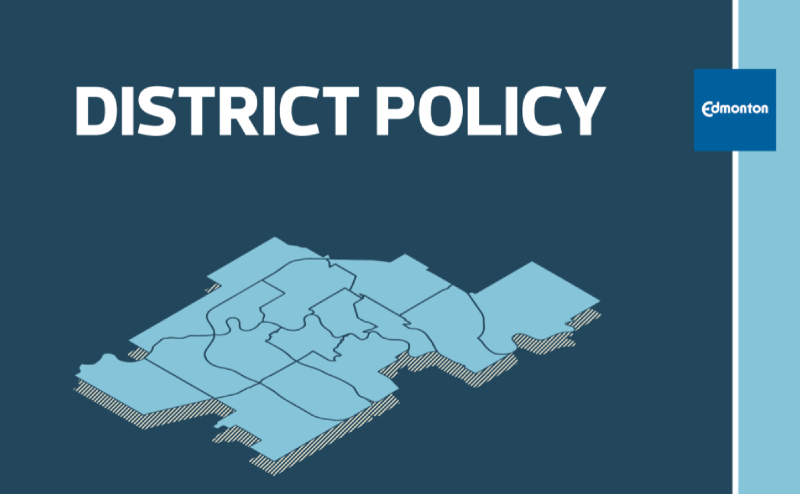| Central (55.1 MB) | Central District Context Maps (14.92 MB) | | Boyle Street, Central McDougall, Dovercourt, Downtown, Glenora, Inglewood, McCauley, North Glenora, Oliver, Prince Charles, Prince Rupert, Queen Mary Park, Riverdale, Rossdale, Sherbrooke, Westmount, Woodcroft | Central (55.1 MB) |
| Ellerslie (18.71 MB) | Ellerslie District Context Maps (11MB) | | Alces, Charlesworth, Decoteau Area, Ellerslie, Ellerslie Industrial, Mattson, Meltwater, Summerside, The Orchards at Ellerslie, Walker | Ellerslie (18.71 MB) |
| Horse Hill (17.12 MB) | Horse Hill District Context Maps (8.75 MB) | | Edmonton Energy and Technology Park, Rural North East Horse Hill, Evergreen, Marquis, Rural North East South Sturgeon | Horse Hill (17.12 MB) |
| Jasper Place (54.08 MB) | Jasper Place District Context Maps (17.42 MB) | | Alberta Park Industrial, Armstrong Industrial, Bonaventure Industrial, Britannia Youngstown, Brown Industrial, Canora, Carleton Square Industrial, Crestwood, Dominion Industrial, Edmiston Industrial, Elmwood, Gagnon Estate Industrial, Garside Industrial, Glenwood, Grovenor, Hawin Park Estate Industrial, High Park, High Park Industrial, Huff Bremner Estate Industrial, Jasper Park, Kinokamau Plains Area, Laurier Heights, Lynnwood, McNamara Industrial, McQueen, Meadowlark Park, Mistatim Industrial, Mitchell Industrial, Morin Industrial, Norwester Industrial, Parkview, Patricia Heights, Poundmaker Industrial, Quesnell Heights, Rio Terrace, Sheffield Industrial, Sherwood, Stone Industrial, Sunwapta Industrial, West Jasper Place, West Meadowlark Park, West Sheffield Industrial, White Industrial, Wilson Industrial, Youngstown Industrial | Jasper Place (54.08 MB) |
| Mill Woods and Meadows (23.12 MB) | Mill Woods and Meadows District Context Maps (12MB) | | Aster, Bisset, Crawford Plains, Daly Grove, Edmonton Research and Development Park, Ekota, Greenview, Hillview, Jackson Heights, Kameyosek, Kiniski Gardens, Larkspur, Laurel, Lee Ridge, Maple, Menisa, Meyokumin, Meyonohk, Michaels Park, Minchau, Parsons Industrial, Pollard Meadows, Richfield, Sakaw, Satoo, Silver Berry, South Edmonton Common, Strathcona Industrial Park, Tamarack, Tawa, Tipaskan, Tweddle Place, Weinlos, Wild Rose | Mill Woods and Meadows (23.12 MB) |
| North Central (26.81 MB) | North Central District Context Maps (15.96 MB) | | Abbottsfield, Alberta Avenue, Beacon Heights, Bellevue, Bergman, Beverly Heights, Blatchford Area, Cromdale, Delton, Eastwood, Edmonton Northlands, Elmwood Park, Highlands, Montrose, Newton, Parkdale, Rundle Heights, Spruce Avenue, Virginia Park, Westwood, Yellowhead Corridor East, Yellowhead Corridor West | North Central (26.81 MB) |
| Northeast (45.97 MB) | Northeast District Context Maps (13.93 MB) | | Balwin, Bannerman, Belmont, Belvedere, Brintnell, Canon Ridge, Casselman, Clareview Town Centre, Clover Bar Area, Crystallina Nera East, Crystallina Nera West, Cy Becker, Delwood, Ebbers, Fraser, Gorman, Hairsine, Hollick-Kenyon, Homesteader, Industrial Heights, Kennedale Industrial, Kernohan, Kildare, Kilkenny, Kirkness, Matt Berry, Mayliewan, McConachie, McLeod, Miller, Sifton Park, Overlanders, Ozerna, Schonsee | Northeast (45.97 MB) |
| Northwest (42.89 MB) | Northwest District Context Maps (12MB) | | Goodridge Corners, Griesbach, Albany, Athlone, Baturyn, Baranow, Beaumaris, Belle Rive, Caernarvon, Calder, Canossa, Carlisle, Carlton, Chambery, Cumberland, Dunluce, Eaux Claires, Elsinore, Evansdale, Glengarry, Hagmann Estate Industrial, Hudson, Kensington, Killarney, Klarvatten, Lago Lindo, Lauderdale, Lorelei, McArthur Industrial, Mistatim Industrial, Northmount, Oxford, Pembina, Rampart Industrial, Rapperswill, Rosslyn, Wellington | Northwest (42.89 MB) |
| Rabbit Hill | Rabbit Hill District Context Maps (7.11MB) | | Edmonton South West, Edmonton South Central | Rabbit Hill Draft (Not yet approved by City Council - see item 3.4) |
| Scona (24.12 MB) | Scona District Context Maps (12MB) | | Allendale, Argyll, Belgravia, Calgary Trail North, CPR Irvine, Empire Park, Garneau, Grandview Heights, Hazeldean, Lansdowne, Lendrum Place, Malmo Plains, Windsor Park, McKernan, Portions of Mill Creek Ravine North, Portions of Mill Creek Ravine South, Parkallen, Pleasantview, Queen Alexandra, Ritchie, Strathcona, Strathcona Junction, University of Alberta, University of Alberta Farm, Windsor Park | Scona (24.12 MB) |
| Southeast (49.62 MB) | Southeast District Context Maps (13MB) | | Avonmore, Bonnie Doon, Capilano, Cloverdale, Coronet Addition Industrial, Coronet Industrial, Davies Industrial East, Davies Industrial West, East Gate Business Park, Forest Heights, Fulton Place, Gainer Industrial, Girard Industrial, Gold Bar, Holyrood, ldylwylde, Kenilworth, Lambton Industrial, Maple Ridge, Maple Ridge Industrial, McIntyre Industrial, Mill Creek Ravine North, Mill Creek Ravine South, Morris Industrial, Ottewell, Papaschase Industrial, Pylypow Industrial, River Valley Gold Bar, Roper Industrial, Rosedale Industrial, Southeast Industrial, Strathearn, Terrace Heights, Weir Industrial | Southeast (49.62 MB) |
| Southwest (24.87 MB) | Southwest District Context Maps (13MB) | | Allard, Ambleside, Blackburne, Blackmud Creek, Callaghan, Cashman, Cavanagh, Chappelle Area, Desrochers Area, Graydon Hill, Glenridding Heights, Glenridding Ravine, Hays Ridge Area, Heritage Valley Area, Heritage Valley Town Centre Area, Keswick, MacEwan, Paisley, Richford, River Valley Windermere, Rutherford, Windermere, Windermere Area | Southwest (24.87 MB) |
| West Edmonton (40.62 MB) | West Edmonton District Context Maps (12MB) | | Aldergrove, Belmead, Callingwood North, Callingwood South, Cameron Heights, Dechene, Donsdale, Gariepy, Jamieson Place, La Perle, Lymburn, Oleskiw, Ormsby Place, Parkview, Place La Rue, River Valley Cameron, River Valley Oleskiw, Summerlea, Terra Losa, Thorncliff, Wedgewood Heights, Westridge | West Edmonton (40.62 MB) |
| West Henday (23.31 MB) | West Henday District Context Maps (12MB) | | Breckenridge Greens, Edgemont, Glastonbury, Granville, Hawks Ridge, Kinglet Gardens, Lewis Farms Industrial, Pintail Landing, Potter Greens, River's Edge, Riverview Area, Rosenthal, Rural West Big Lake, Secord, Starling, Stewart Greens, Stillwater, Suder Greens, The Hamptons, The Uplands, Trumpeter Area, Webber Greens, Westview Village, Winterburn Industrial Area East, Winterburn Industrial Area West | West Henday (23.31 MB) |
| Whitemud (25.8 MB) | Whitemud District Context Maps (13MB) | | Aspen Gardens, Bearspaw, Blackmud Creek Ravine, Blue Quill, Blue Quill Estates, Brander Garders, Brookside, Bulyea Heights, Calgary Trail South, Carter Crest, Duggan, Ermineskin, Falconer Heights, Greenfield, Haddow, Henderson Estates, Hodgson, Keheewin, Leger, Mactaggart, Magrath Heights, Ogilvie Ridge, Ramsay Heights, Rhatigan Ridge, Rideau Park, Royal Gardens, Skyrattler, South Terwillegar, Steinhauer, Terwillegar Towne, Twin Brooks, Westbrook Estates, Whitemud Creek Ravine North, Whitemud Creek Ravine South, Whitemud Ravine Twin Brooks | Whitemud (25.8 MB) |


